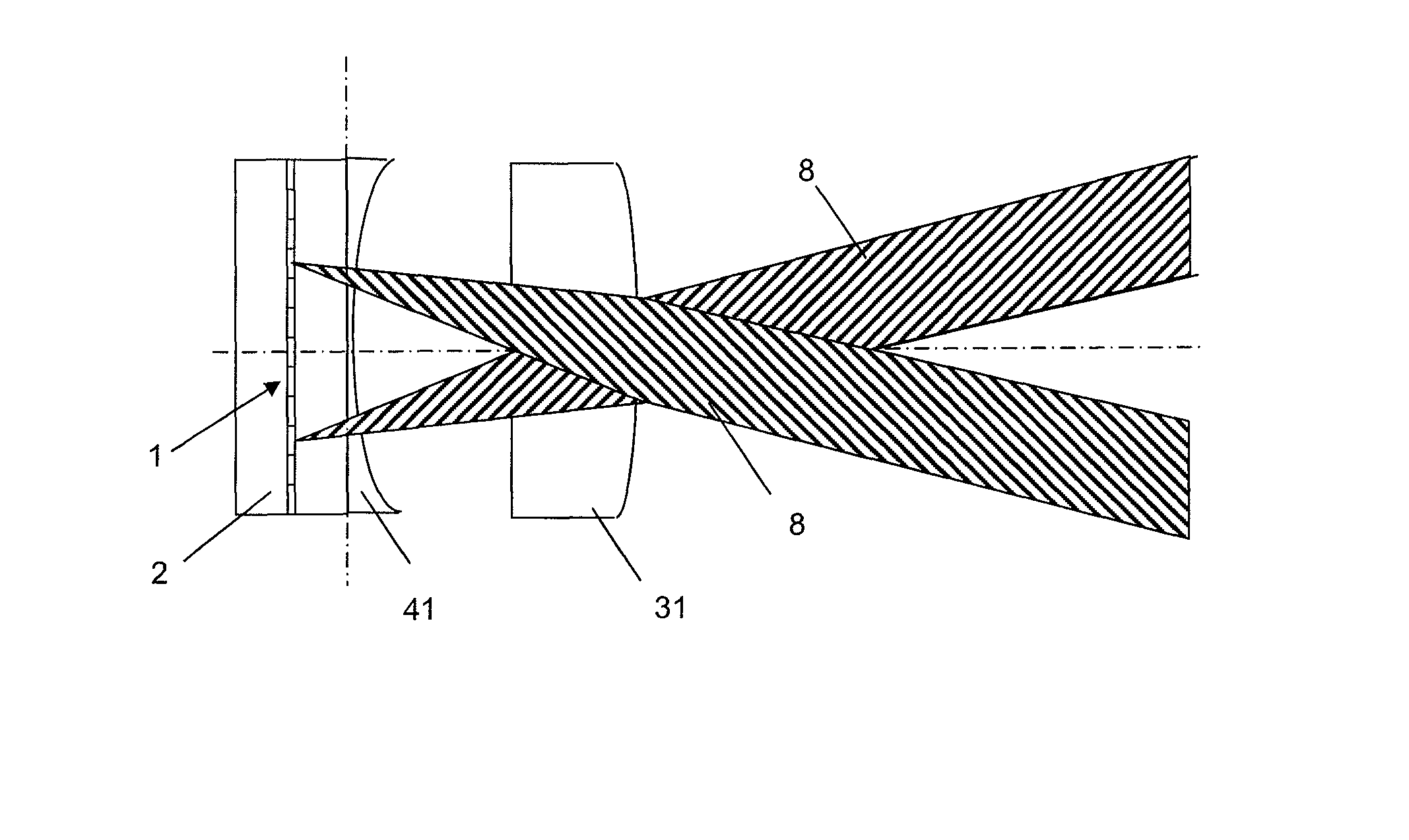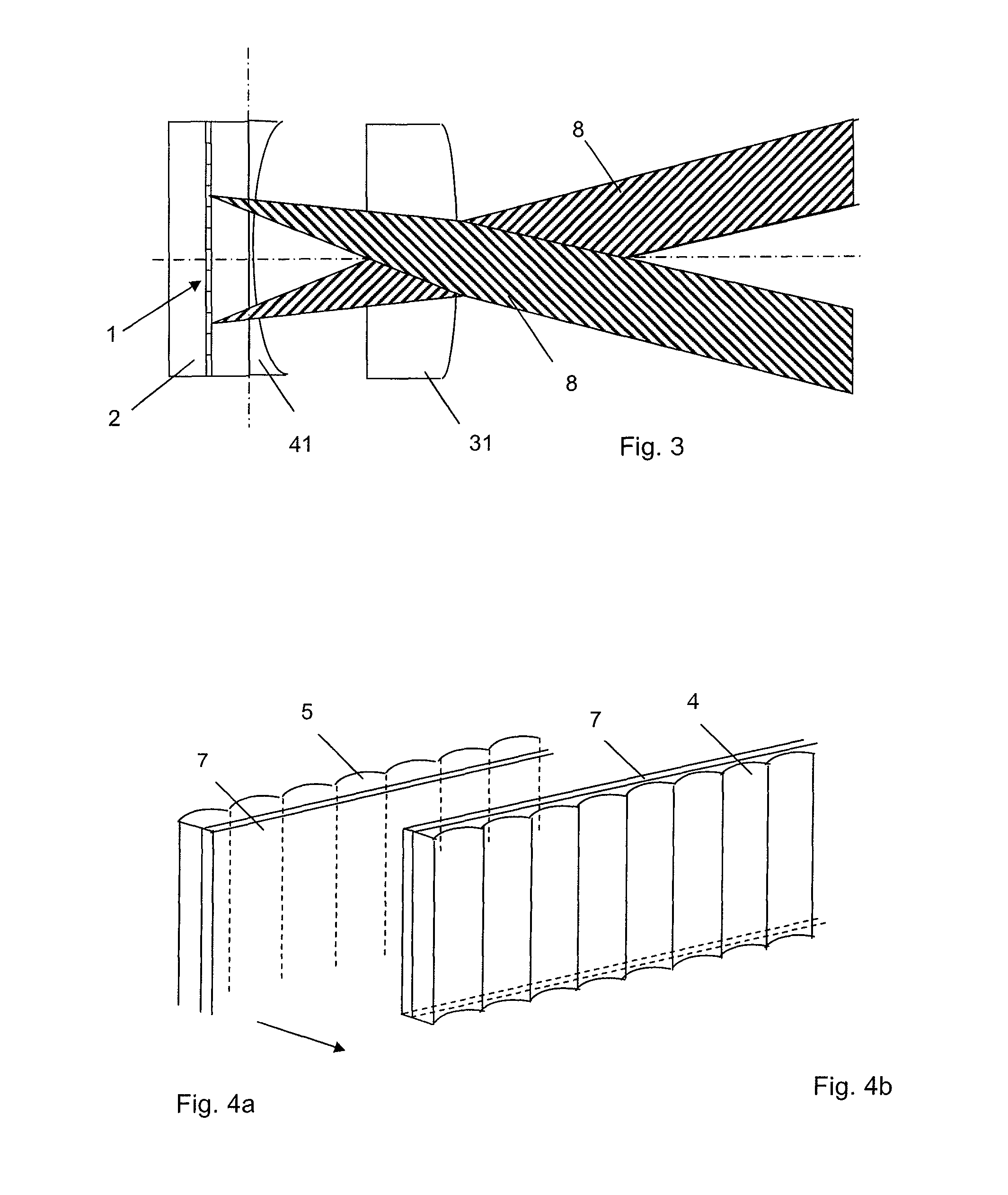Image display device for an autostereoscopic display with a sweet spot unit containing an image matrix and a corrective matrix for correcting field curvature
- Summary
- Abstract
- Description
- Claims
- Application Information
AI Technical Summary
Benefits of technology
Problems solved by technology
Method used
Image
Examples
Embodiment Construction
[0042]Now, the effect of the corrective matrix according to this invention during imaging of point elements with an imaging matrix will be described in greater detail.
[0043]The imaging matrix consists for example of imaging elements in the form of stripes or lenses. The illumination matrix consists of a multitude of illumination elements.
[0044]FIG. 1 illustrates, in simplified form, the effect the field curvature has in an autostereoscopic multi-user display. The field curvature represents the actual course of the rear focal points of inclined rays, which arises during the imaging of illumination elements through an imaging element of an imaging matrix. The illumination matrix (only partly shown in the figure), for example a shutter 2, contains a number of pixels 1 as illumination elements. An imaging matrix in the form of a lenticular with parallel, stripe shaped lenticules 31 as imaging elements for focusing light on to viewer's eyes, seen in the direction of light propagation, is...
PUM
 Login to view more
Login to view more Abstract
Description
Claims
Application Information
 Login to view more
Login to view more - R&D Engineer
- R&D Manager
- IP Professional
- Industry Leading Data Capabilities
- Powerful AI technology
- Patent DNA Extraction
Browse by: Latest US Patents, China's latest patents, Technical Efficacy Thesaurus, Application Domain, Technology Topic.
© 2024 PatSnap. All rights reserved.Legal|Privacy policy|Modern Slavery Act Transparency Statement|Sitemap



